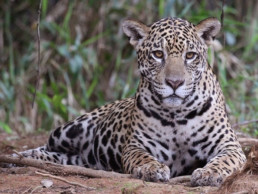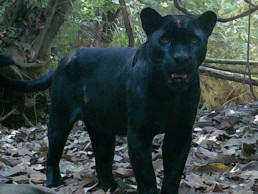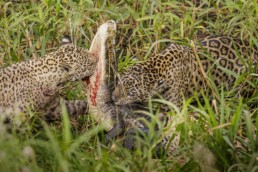Acknowledged as a terrestrial icon, the jaguar, with its majestic presence and distinctive behaviors, serves as a key player in maintaining ecological harmony. This species, recognized for its prowess as a top predator, plays a crucial role in regulating the populations of various prey species. The jaguar’s predatory influence creates a ripple effect throughout the ecosystem, shaping the distribution and behavior of other wildlife and contributing to overall biodiversity.
Near Threatened
The Jaguar is the largest cat species in the Americas and the third largest in the world after lions and tigers. It is currently classified as Near Threatened by the IUCN, having lost 20-25% of its population over the last 3 generations (21 years). It is threatened by habitat loss, habitat fragmentation, poaching for trade with its body parts and killings in human–wildlife conflict situations, particularly with ranchers in Central and South America. It has featured prominently in the mythology of indigenous peoples of the Americas, including those of the Aztec and Maya civilizations and is considered a symbol of strength and power. Although it is a dangerous predator with jaws that can pierce a turtle’s carapace or a mammal’s skull, humans are rarely attacked. According to Charles Darwin, the indigenous peoples of South America stated that people did not need to fear the jaguar as long as capybaras were abundant.

King of the Jungle
The Jaguar’s coat is covered in black spots and rosettes whose patterns serve as camouflage in areas with dense vegetation and patchy shadows. Jaguars living in forests are often darker and considerably smaller than those living in open areas, possibly due to the smaller numbers of large, herbivorous prey in forest areas. It stands 57 to 81 cm tall at the shoulders but its size and weight vary considerably depending on sex and region, with the size increasing from northern to southern populations. There is a rarer black morph, or melanistic jaguar, known as a black panther that is more common in tropical rainforest.

The Jaguar is generally most active at night and during twilight, although in densely forested regions of the Amazon Rainforest and the Pantanal they are active in daytime to coincide with the activity of their main prey species. They are good swimmers and play and hunt in the water. They attack from cover and usually from a target’s blind spot with a quick pounce that may include leaping into water after prey, as a jaguar is quite capable of carrying a large kill while swimming. They are strong enough to haul carcasses as large as a heifer up a tree to avoid flood levels. Jaguars are generally solitary except for females with cubs, and use scrape marks, urine and feces to mark their territory.
The Jaguar historically ranged from the southwestern US through the Amazon basin to the Rio Negro in Argentina with its stronghold the rainforest of the Amazon basin. However it has been
virtually eliminated from much of the drier northern parts of its range as well as northern Brazil, the pampas scrub grasslands of Argentina and throughout Uruguay.

